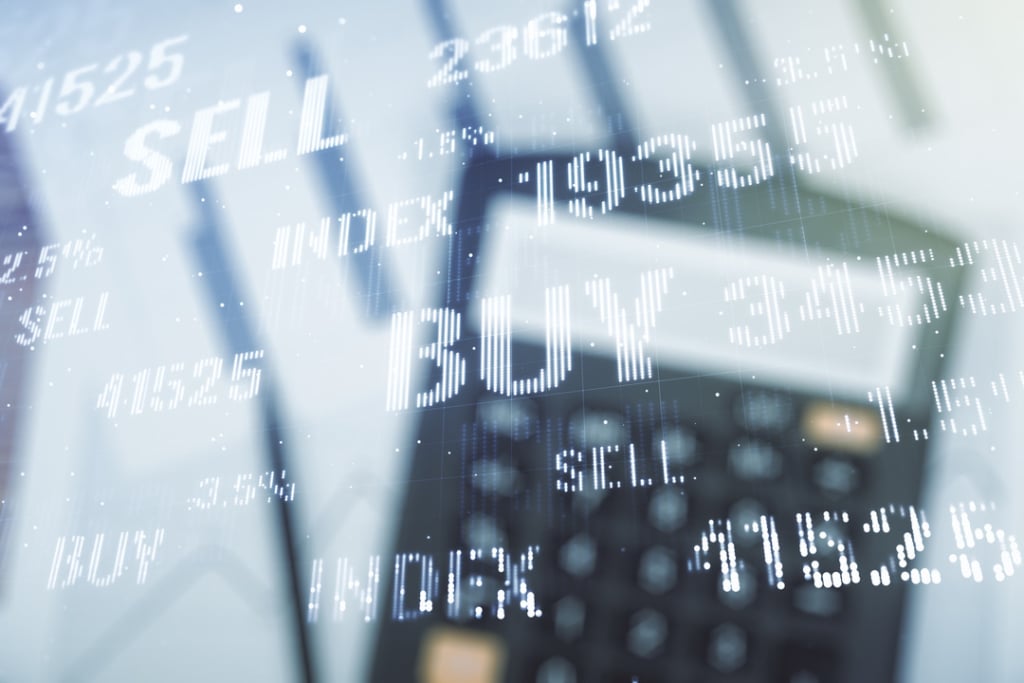Leverage in Forex trading, involves using borrowed money from the broker to invest in a currency trade. You can borrow money from a broker to enter transactions in the market. The bigger capital you borrow allows you to control a huge trading position than you can normally afford. This post is an in-depth explanation of how leverage works, defining its pros, cons and tips for trading safely with it.
How Does Leverage work? – An In-Depth Explanation
So what is leverage in trading and how does it work? Leverage refers to the use of a small initial fund or capital to gain exposure to larger trade positions. It is essentially a loan given to you by the broker which allows you to access much larger positions than your actual deposit would have allowed.
Unlike traditional trading where you’re required to deposit the full value of the position you wish to trade, trading leverage requires you to put up a small portion of its value based on a specific ratio the broker offers. For instance, for a 50:1 (2%) leverage, you can control a position that is 50 times your capital.
Leverage amplifies the potential profit a trader can make, but can also increase losses, which is why it should be used carefully.

Understanding Leverage in Forex Trading
The best way to illustrate leverage in forex trading is with an example. Say you want to buy a USD/GBP currency pair. Without leverage, you will have to put down a total capital of $10,000 to open a trade. A forex leverage of 3% will allow you to buy the same position with $300 instead of the full capital of $10, 000.
If the GBP strengthens against the dollar and you’re able to sell your position for $10,100, you would have made a profit of $100. With traditional trading, you made $100 with $10,000 which is a 1% profit. But with 3% leveraged trade, you made the same $100 using just $300. This means your profit in this case was 33%.
On the flip side, if the GBP weakened against the dollar and you sold your position for $9,900, you’d only lose 1% of your 10,000 capital without leverage. But with leverage, you would be losing 33% of your capital.
The Pros and Cons of Leverage Trading
The biggest benefit of leverage trading is that it allows a trader to acquire more of a trading position than they would normally acquire with the same capital. For instance, a trader with a $300 budget would have only earned $3 from the market movement described above. However, with a 3% leverage, the same trader can now afford to buy a position worth $10,000, raising his profit to $100. When you invest with leverage, you only need to cover a fraction of the total position while the broker covers the rest.
On the flip side, trading with leverage can have massive negative consequences especially if the trade does not swing in the anticipated direction. Just like it amplifies your profit, leverage could also amplify your loss.
Following the example cited above, if you opened a position with $300, you’ll only lose $3 if the price movement is negative. This is equivalent to just 1% of your capital. However, if the trade was leveraged to $10,000, you’ll be losing $100 of your own money, which is equivalent to 33% of your $300 capital. To summarize, leverage trading is inherently riskier than trading with your capital because a small change will affect both profit and loss significantly.
Margin vs. Leverage: Key Differences Explained
Margin and leverage trading are quite similar because they both involve investing in a trading position bigger than you can normally cover with your budget. However, margin involves borrowing from the broker to increase your purchasing power using collateral deposited into your margin account. The borrowed funds in this case must be paid back with interest. With trading leverage, the trader borrows from the broker to amplify profit (or loss).
Tips for Trading Safely with Leverage
Since trading with leverage is a double-edged sword, traders have to be careful when trading with this strategy because it can amplify losses. Here are some tips to leverage safely while maximizing your profits:
● Carefully calculate position sizes based on your risk tolerance while considering the impact of leverage on potential losses.
● Select the right leverage ratio to minimize exposure and loss.
● Set a stop loss to manage unfavorable market movements.
● Set order limits to automatically execute trades.
● Monitor and stay on top of market movements.

Frequently Asked Questions About Leverage in Trading
What does leverage mean in trading?
Leverage is a strategy in forex trading that allows you to borrow money from the broker to access trading positions bigger than your capital.
What is leverage in Forex trading?
Leverage in forex trading involves borrowing money from the broker to gain more market exposure than you can normally afford with your capital.
What are the risks of using leverage in trading?
Leverage trading amplifies potential losses. This means you’re likely to lose more of your capital than you would have done trading without losses if the market moves against you.
What is the ideal leverage ratio for beginners?
The ideal leverage ratio for a beginner is 1:10. A relatively low leverage ratio is perfect for beginners because it helps limit losses and manage risks effectively.
How can traders manage risk when trading with leverage?
To manage risk when trading with leverage, pay attention to the position sizes of your trade. You should also set stop loss and other mechanisms that help minimize loss when the market moves against you.







